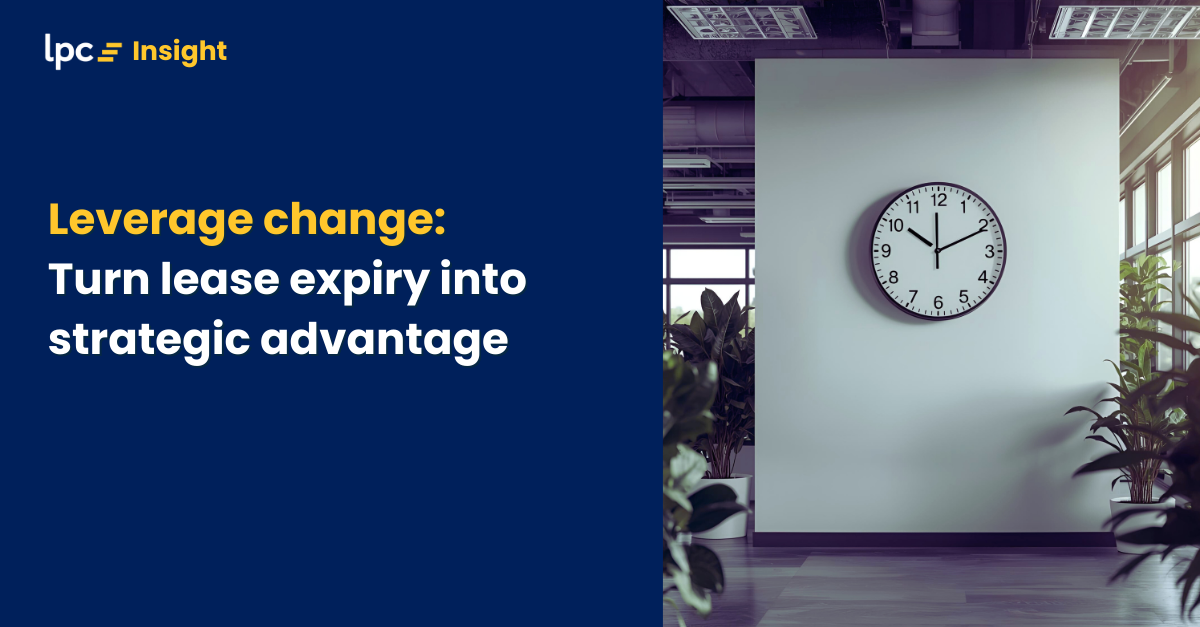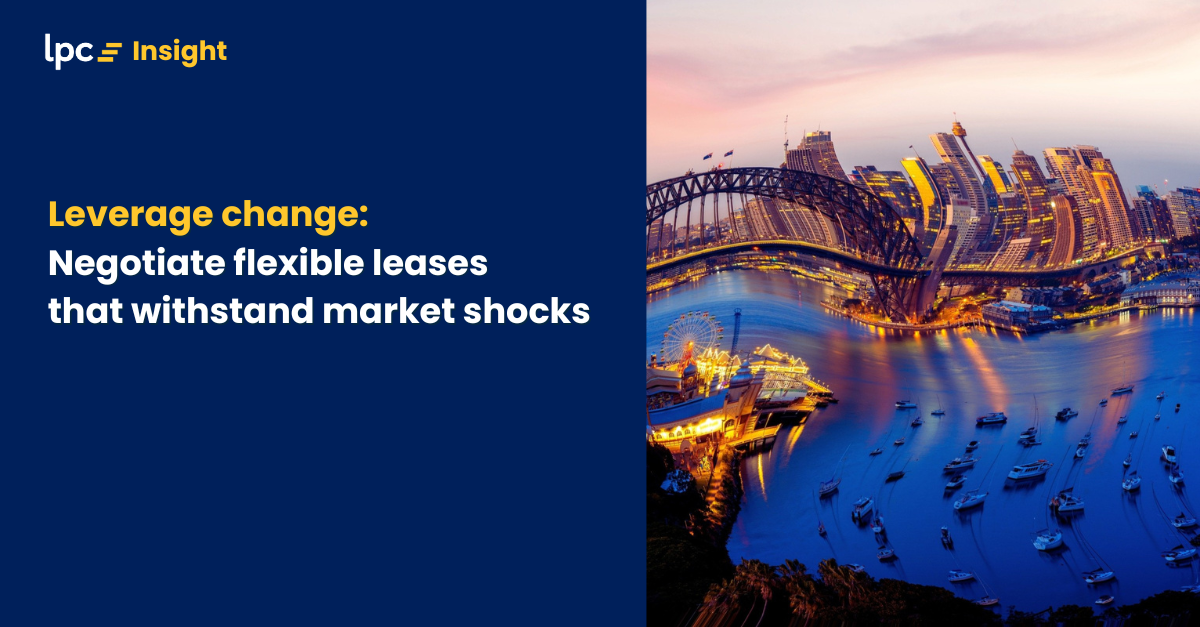The Australian office sector is amid a defining shift. While overall vacancy rates remain elevated, we're seeing clear signs that a “flight to quality” is redrawing the map of office demand. Tenants are opting for premium, well-located buildings that prioritise experience, sustainability, and flexibility - often at the expense of older, less adaptable stock.
The offices themselves are only part of the story.
Forward-thinking tenants are also reevaluating how they lease, occupy, and manage their space. The terms they negotiate and the portfolio strategies they adopt will shape their cost exposure, resilience, agility, and competitive edge.
At LPC, we believe that winning in this market requires more than good space. It requires businesses to futureproof today, structuring office arrangements that enable performance, culture, and long-term confidence.
Key trends
1. Hybrid work has found its balance
Hybrid work isn’t going anywhere - but it has matured. In 2025, we're seeing clearer policies emerge across Australian businesses, with flexibility embedded in workplace strategies, not bolted on.
2. Flight to quality: Premium or bust
Businesses are consolidating into better-quality spaces - choosing fewer square metres in buildings that offer better performance. These decisions are driven by:
• Amenity-rich environments
• Superior ESG credentials
• Smart building technology
• Wellness infrastructure
This is especially evident in Sydney and Melbourne, where demand is holding steady in Premium and A-grade buildings while lower-grade stock struggles with long-term vacancies
.
3. Lease terms are under the microscope
It’s not just where you lease - but how. More businesses are reassessing:
• Lease lengths and break options
• Flexibility to scale up or down
• Make-good obligations
• Capex and incentive structures
• Options to sublease or assign
Tenants are seeking terms that support long-term agility, not lock-in commitments that may not reflect future workforce models.
4. Portfolio optimisation is back on the agenda
For organisations with multiple sites, portfolio review is a growing priority. That means aligning location, cost, performance, and employee needs across assets.
We’re seeing increased interest in:
• Rationalising underused space
• Structuring staggered lease expiries
• Co-locating or consolidating teams
• Balancing CBD vs fringe site exposure
Done right, portfolio optimisation can reduce overheads, improve culture, and mitigate risk.
5. Supply constraints driving competition
New office completions are down significantly, due to ongoing construction cost inflation and planning delays. In Sydney and Brisbane, this has created an undersupply of high-quality space in the pipeline.
For occupiers, this means early engagement with advisors is critical - particularly for medium to large-scale requirements or fitout ready requirements in 2026 and beyond.
6. ESG is now a leasing imperative
Tenants with formal ESG reporting obligations are prioritising offices with high NABERS and Green Star ratings, net-zero pathways, and operational efficiency. Buildings that don’t meet this threshold are increasingly excluded from longlists.
7. The workplace as brand and culture catalyst
Organisations are using office fitouts and locations to reinforce culture, attract talent, and inspire innovation. This is especially true in tech, legal, consulting, and creative sectors, where workplace identity is directly tied to business success.
Design decisions - such as flexible collaboration areas, biophilic design, acoustic comfort, and communal kitchens - are increasingly seen as strategic.
CBD spotlights
Sydney
Sydney’s Premium market remains the most resilient nationally, with limited upcoming supply and continued demand from global tenants. B-Grade stock, however, is underperforming.
Melbourne
Melbourne's recovery continues, though vacancy remains high by historical standards. The city benefits from strong public transport and cultural vibrancy, attracting tenants seeking experiential work environments.
Brisbane
Brisbane is one of the strongest performers in 2025, buoyed by infrastructure investment, interstate migration, and a strengthening white-collar economy. Tenants are increasingly looking to the CBD and Fortitude Valley for high-spec options.
Perth
Perth has seen a solid rebound, with strong leasing activity in the resources and legal sectors. Flight to quality is playing out here too, with refurbished A-Grade buildings gaining traction.
Adelaide
Adelaide is gaining momentum as an attractive alternative for nationally distributed businesses and government agencies. The city’s affordability, strong education and defence sectors, and expanding innovation precincts are supporting steady demand. While vacancy remains elevated, recent upgrades to A-Grade assets in the CBD are drawing interest from tenants prioritising value without compromising quality.
Conclusion: Futureproofing means rethinking
Australia’s office market isn’t shrinking - it’s evolving. Tenants are seeking spaces that align with broader business priorities: wellbeing, ESG, flexibility, and cultural resonance. As advisors exclusively representing occupiers, LPC believes:
• Start early: Secure premium space before competition tightens further.
• Think strategically: Let the office be a tool for performance, not just an address.
• Stay informed: Market dynamics are changing fast - data and expert guidance matter more than ever.
LPC exists to put your business before space. As you plan a move, a renegotiation, or a reinvention of your workplace, our team helps you make confident, conflict-free decisions. Now is the time to reassess your position in the market with advice that’s not compromised by landlord interests. At LPC, we help occupiers reshape their lease strategy around business needs - not landlord expectations.
Join the movement to strengthen the tenants' voice by subscribing to The Tenants' Voice LinkedIn Newsletter!



